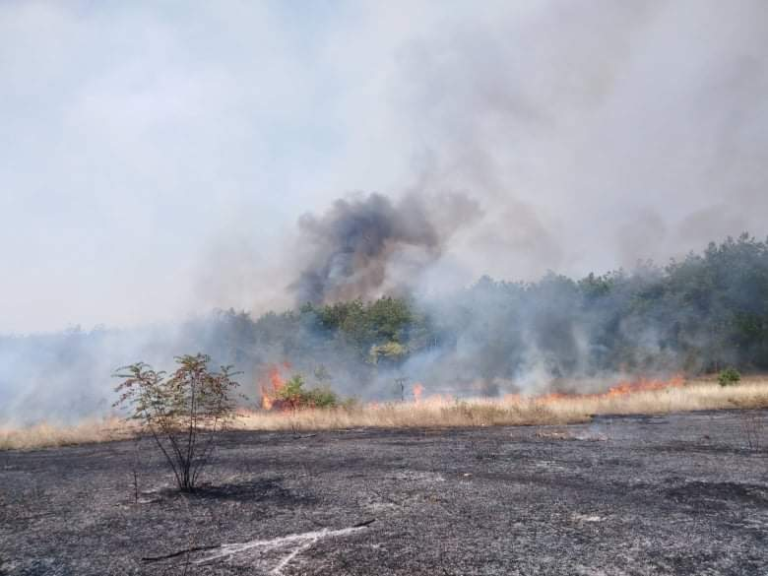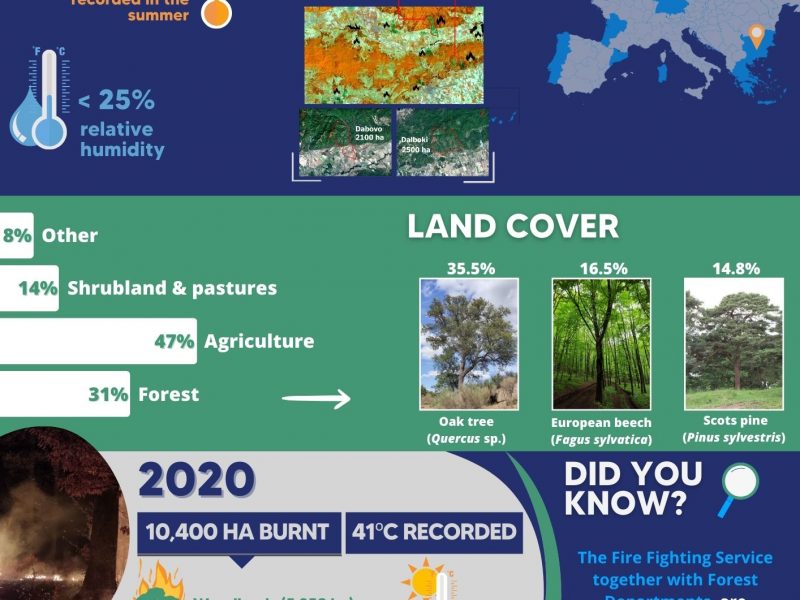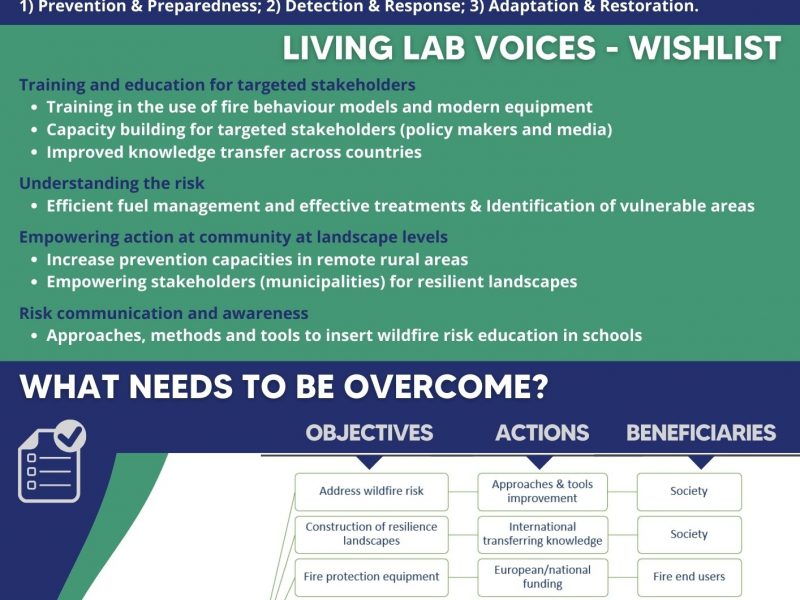CONTEXT
In Bulgaria, about one third of the territory is forests and mainly State-owned (76%). On average, Bulgaria experiences 600 forest fires annually that affect 10,000 hectares and cause 2.5 million euro of direct losses.
The Living Lab will be the Stara Zagora region. This site is characterized by a variety of forest types – typical deciduous (coppice oak), but also large coniferous plantations at low altitude.
The Living Lab is an area with frequent forest fires during the dry summer and autumn periods – 110 fires have occurred in the 2005-2020 period burning a total of 5,000 ha (of which 1/4 were crown fires). Fire ignitions are natural, but also man-made – usually fires start from agriculture lands.
FIRE MANAGEMENT IN BULGARIA
In Bulgaria, fire suppression is done mostly with “soft” sylvicultural measures following the “Plans for protection of forest territories from fires”.
Thefire suppression management is led by the Fire Fighting Service assisted by Forestry workers and Volunteer groups (governed by the local mayor). The Civil Protection Service is integrated in the Fire Fighting Service.

CHALLENGES
- Dramatic increase of fires after 1990s (i.e. Kresna fire, 2017, 1600 hectares)
- Low level of training and preparedness for response in wildfires among foresters and volunteer groups, which are involved in fire-fighting
- Insurance schemes are not used except for private homes (quite unpopular)
- Limited number of agriculture lands have insurances
- Large parts of forests in Bulgaria are within Natura2000 areas, so certain limitations apply in forest management activities
INNOVATION ACTIONS
Advanced Technology Solutions - Support Tools for Integrated Fire Management
IA 5.4. Piloting models for fire combustion and Pyrocumulonimbus with use of HR data
IA 5.5. Testing of vertical atmospheric structure models based on satellite constellation in EWE
IA 5.6. Prototyping HAPS (High Altitude Pseudo Satellites) contribution to Europe’s resilience against EWE
IA 5.10. Development of a Pan-European system to define management priorities to mitigate fire impact
Factsheets
A set of factsheets was produced by forestWISE to interactively complement the information available on the Living Lab.
INNOVATION ACTIONS
Advanced Technology Solutions - Support Tools for Integrated Fire Management
- IA 5.1. Demonstration of an integrative umbrella system for estimating EWE risk and impact in real time with HR weather data
- IA 5.2. Demonstration of real-time EWE simulation and smoke spread based on coupled fire-atmosphere approaches using of HR weather data
- IA5.3. Advanced vegetation characterization based on Earth Observation data fusion and Artificial Intelligence over forestland ecosystems
- IA 5.4. Piloting models for fire combustion and Pyrocumulonimbus with use of HR data
- IA 5.5. Testing of vertical atmospheric structure models based on satellite constellation in EWE
- IA 5.6. Prototyping HAPS (High Altitude Pseudo Satellites) contribution to Europe’s resilience against EWE
- IA 5.9. Tools for international collaboration through shared operational information for specialized stakeholders
- IA 5.10. Development of a Pan-European system to define management priorities to mitigate fire impact
PARTNERS
University Of Forestry (Bulgaria)
Contact

Prof. Georgi Kostov
- University of Forestry, Bulgaria
- doc_georgi_kostov@abv.bg

Prof. Momchil Panajotov
- University of Forestry, Bulgaria
- mp2@abv.bg

Dr. Elena Rafailova
- University of Forestry, Bulgaria
- erafailova@yahoo.com

